Everything Connects
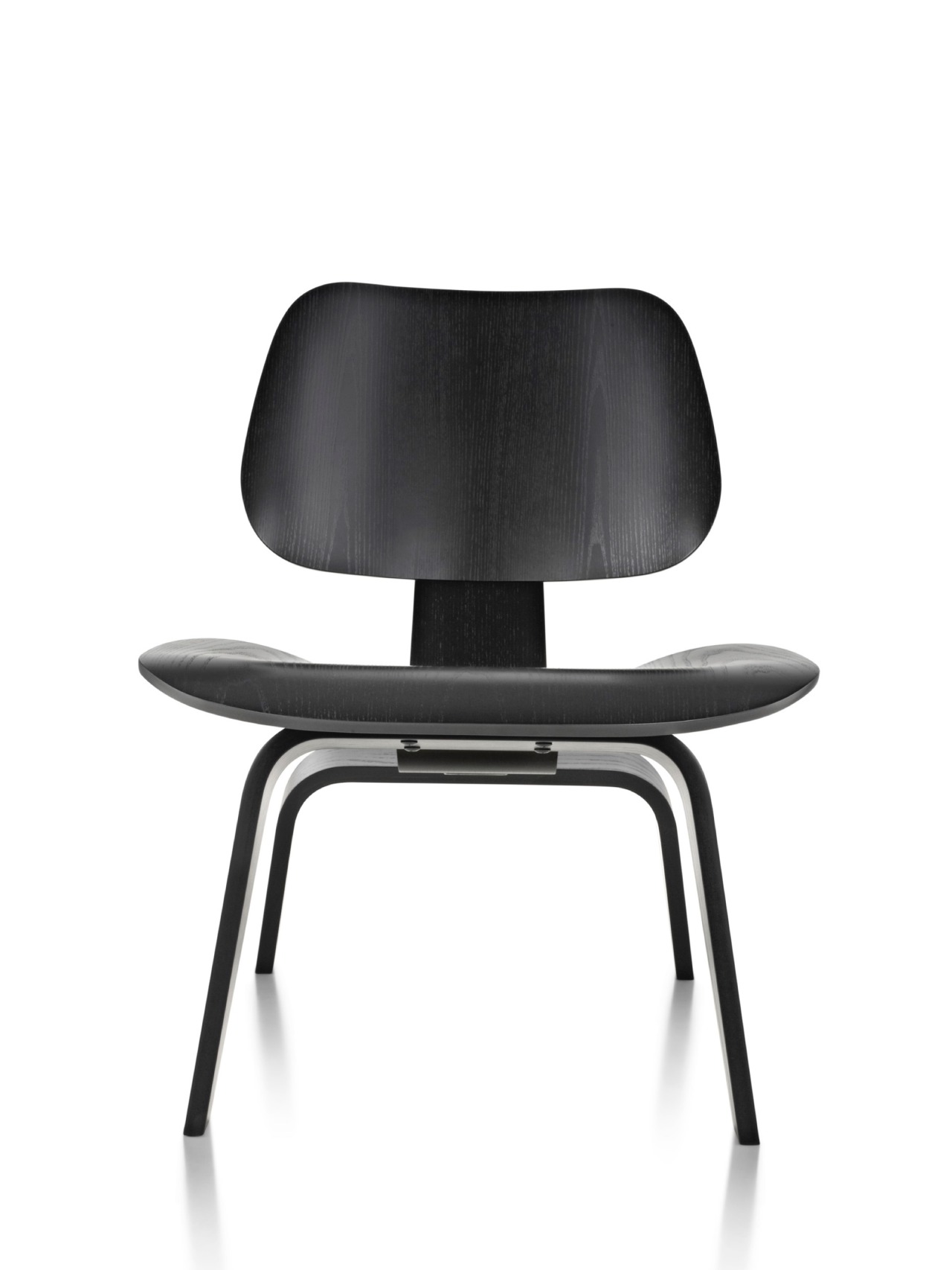
Last summer, my fiancee and I moved in together. Right away, we began that sometimes-arduous task of reconciling our decorating sensibilities, turning a small second-level apartment on a quiet street in Brooklyn's Sunset Park into our home. (It's coming together!) A few months ago, we finally purchased a piece of furniture I've lusted over for half my life: an Eames molded plywood chair. It's not just my favorite piece of furniture we own, it's also my favorite piece of furniture ever. It's simultaneously the pinnacle of the work of the two designers who have shaped my work more than anyone else and an object that reminds me of my own journey in design.
Officially named the LCW, for "Lounge Chair Wood" or "Low Chair Wood", Charles and Ray Eames released this chair in 1946 after a half decade of research in bending and molding plywood. Along with its siblings, the DCW ("Dining Chair Wood"), DCM ("Dining Chair Metal"), and LCM ("Lounge Chair Metal") — the latter two retaining the molded seat but with metal legs — the collection was the culmination of years of research in material, manufacturing, and 'honesty in design'. It was the distillation of everything the couple had worked on up to that point and in many ways, launched their careers. When Charles was asked if he thought of the Eames chair in flash, he responded, "Sort of a thirty-year flash."
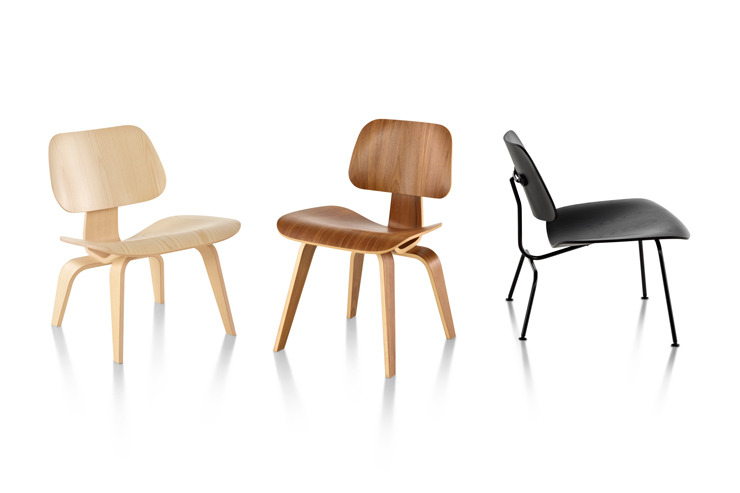
The experiments began when a 32-year-old Charles was the Head of the Design Department at the Cranbrook Academy outside Detroit. He had recently befriended Eero Saarinen, who was then an architect at his father, Eliel Saarinen's, architecture firm. The studio was working on a design for the Klienan's Music Hall in Buffalo New York and in 1939 and Eero and Charles were tasked with designing the seating. The duo developed an armchair made of a single curved seat and back that were well received when installed in the finished building.
A year later, Elliot Noyes, then the director of design at MoMA, was organizing the museum's "Organic Design in Human Furnishings" competition. The contest, which drew 585 entries, was built around Noyes belief that design should evolve organically from the changes taking place in society. "In a field of home furnishings, there has been no outstanding developments in recent years," Noyes wrote in the brief, "a new way of living is developing, however, and this requires a fresh approach to the design problems and a new expression." Charles and Eero, lovers of competitions, saw this as a way to continue thinking about what they started in their work for the Kleinan's chair. They wanted to create a system for mass-producing high-quality, low-cost furniture. Instead of the single curve balanced on a structure, they started working on a new design with multiple curves. Ray had recently arrived at Cranbrook where she was auditing classes in weaving and was quickly brought into the process to help with final presentation drawings. Other Cranbrook students joined in as the deadline approached. They submitting renderings of five chairs, two sofas and two tables, and a series of case goods to the competition. In January 1941, it was announced that Charles and Eero won two categories: chairs and case goods.
In eight months, MoMA would be holding an exhibition with the award winners' pieces in production. The duo's drawings were so refined the jury assumed the pieces had already been produced. They were not. But by this time, both Charles and Eero had turned their attention elsewhere — Charles and Ray had gotten married and moved to California and Eero had begun work on his Defense Housing project. There were multiple manufacturing issues: molding wood proved more complicated than expected and when they finally succeeded, manufacturing costs were too high to offer the chairs at the desired cost.
The exhibition opened in September to mixed response. Only a handful of chairs had been successfully produced. But Charles and Ray would continue thinking about these experiments and it would turn out to be another five years before their potential would be realized.
Before graphic design, I was interested in architecture and interior design. I'd always had a fondness for design (though I wouldn't have used that word) but it didn't crystalize until seventh grade when I saw an episode of the then-new TLC home improvement show, Trading Spaces. I was completely enraptured. I started redesigning my own bedroom. I spent time at Home Depot, looking at paint swatches and floor samples. I installed a design-your-own-home program that came on a CD-ROM and started designing homes. My friend Andy, who grew up down the street, also wanted to be an architect and together we started redesigning our friends' bedrooms for money. We'd present mood boards with furniture options, paint swatches and new ways to rearrange the furniture and then we'd go buy everything, painting their walls and assembling new IKEA furniture. It was my first business. These were my first design projects. We called it J.A. Architecture.
Our family moved into a new home between my seventh and eighth grade years and I relished the opportunity to design my new bedroom from scratch. I drew to-scale floor plans and elevations outlining the specifics about everything from where my new furniture would go to what would be hung on the walls, where lighting would be positioned to what would be placed on each shelf. It was a converted attic and I painted the two end walls a deep red, highlighting the angles of the ceiling. This bedroom became was my ultimate design project; the one I returned to again and again until I left home for college. I spent my free-time rearranging furniture, replacing the artwork on the walls or the pillows on the bed. It looked nothing like a typical fourteen-year-old bedroom.
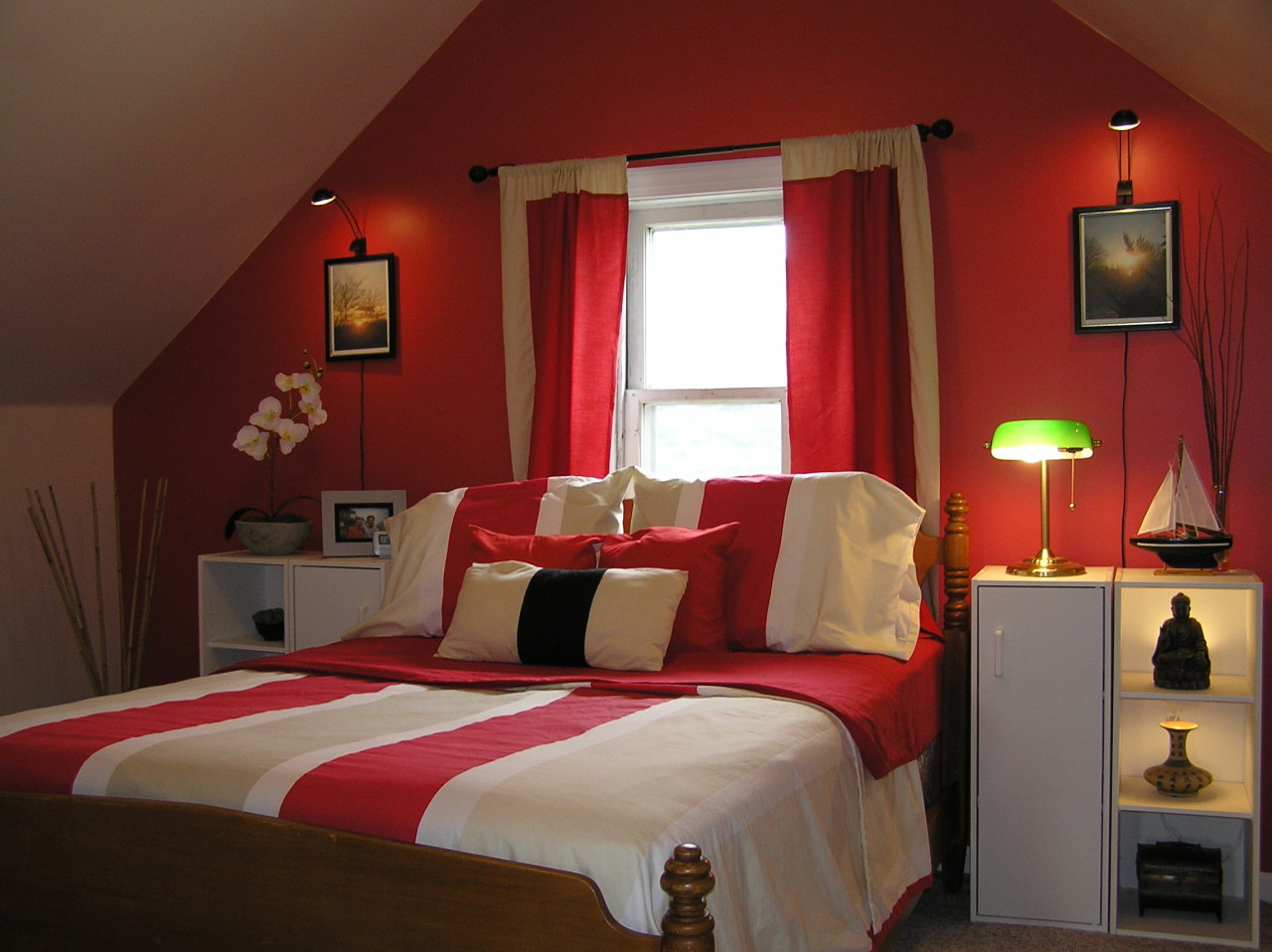
Somewhere in this process, I saw a photo of a red Eames molded plywood chair and I immediately wanted one for my bedroom. The color matched my palette, the design matched my imagined-aesthetic. It became an aspirational object; an obsession even. I just started high school and had no income — the Eames chairs were more expensive than the IKEA furniture I was used to. (I'm not sure I had ever seen a chair that expensive before.) I made drawings of it. I hung a photograph of it on my bulletin board and glued the page from the Design Within Reach catalog — of which I had recently subscribed — into my sketchbook.
A few years later when visiting colleges, I walked into the Kanbar Center — the student union at Philadelphia University — and knew immediately that's where I wanted to go to college. The building was a large modernist structure in the middle of a wooded plot of land, walled in glass. Along the large windows sat two-dozen black Eames molded plywood chairs. It was the first time I had seen one in real life. My mom took of photo of me sitting in one. After I got accepted and moved in a few months later, I spent my first day on campus sitting in one. I tweeted about it.
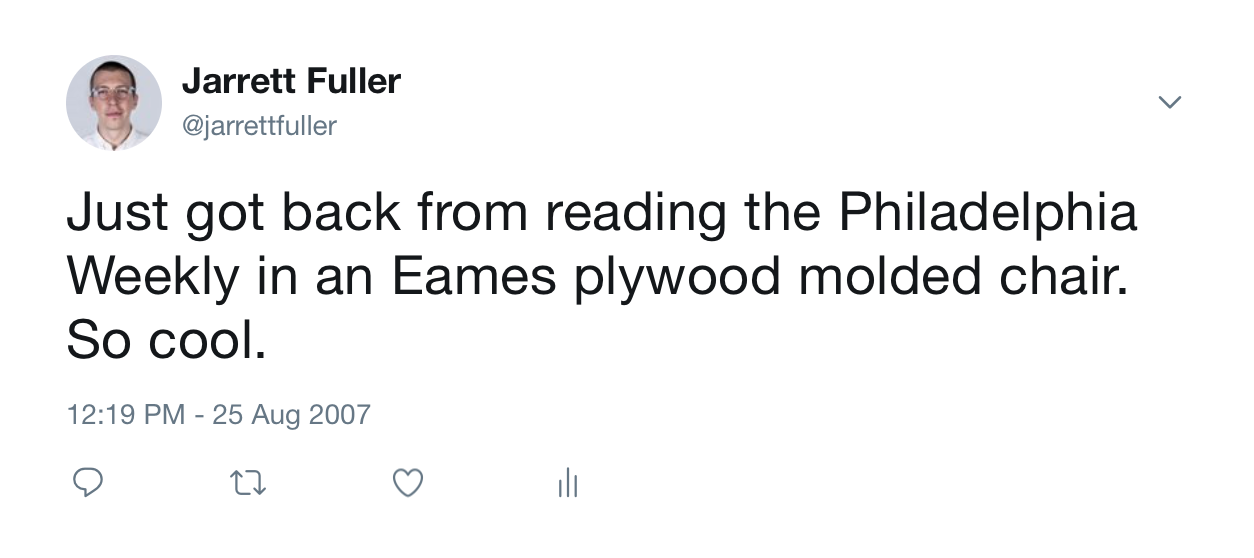
I ended up leaving Philadelphia University after the first semester — it turns out that basing your college decision on the furniture in the student union isn't always a good idea. The school I transferred to was immediately better fit, even with the absence of Eames furniture.
The Eames continued thinking about molding plywood after moving to Los Angeles in 1942, and began experimenting in their apartment. Their earliest experiments involved a laborious method of gluing and bonding thin plies of wood using a machine the couple created called the "Kazam! machine", the name coming from the sound it made. The device was built with hinged two-by-four-inch pieces of lumber that were bolted together so it could withstand the high pressure necessary for shaping the wood. This was in the middle of World War II, and Charles and Ray used used this technology to begin manufacturing leg and arm splints and even a plywood airplane fuselage and pilot's seat.
In 1945, Noyes gave Charles his own exhibition — Furniture by Charles Eames Despite the title, the Eames had developed an equal partnership, with both Charles and Ray working across all parts of the process. In this show, they introduced the 'Eames Plywood Chair'. In a short film the couple produced in 1954 about the manufacturing, Charles narrates:
In a more or less standard situation like sitting for eating or writing, we found that certain relationship of support gives optimum comfort to a surprisingly large number of people. We found that comfort depended more on the perfect molding to the body shape than it did on the way the bone structure was supported. And if the structure was supported properly, the hard and rigid material like molded plywood can provide a remarkably high degree of comfort. We limited the solution to a hard surface and concentrated on plywood. . . . We tried movement and found that if the back was allowed to move in relation to the seat, the latitude of comfort was greatly increased.
The product was an immediate hit. Time called the LCW the 'chair of the century' They continued working with these ideas into the seventies (hence the '30 year flash') as they developed the Piece Secretarial Chair. "This evolution is a perfect example of the design design process as it worked at the Eames Office," writes Dmtrious Eames, their grandson, in his biography of the couple, An Eames Primer, "the feeling that, rather than a single moment of inspiration, there was a constant working out of each issue one by one, a kind of learning by doing until a solution was revealed."
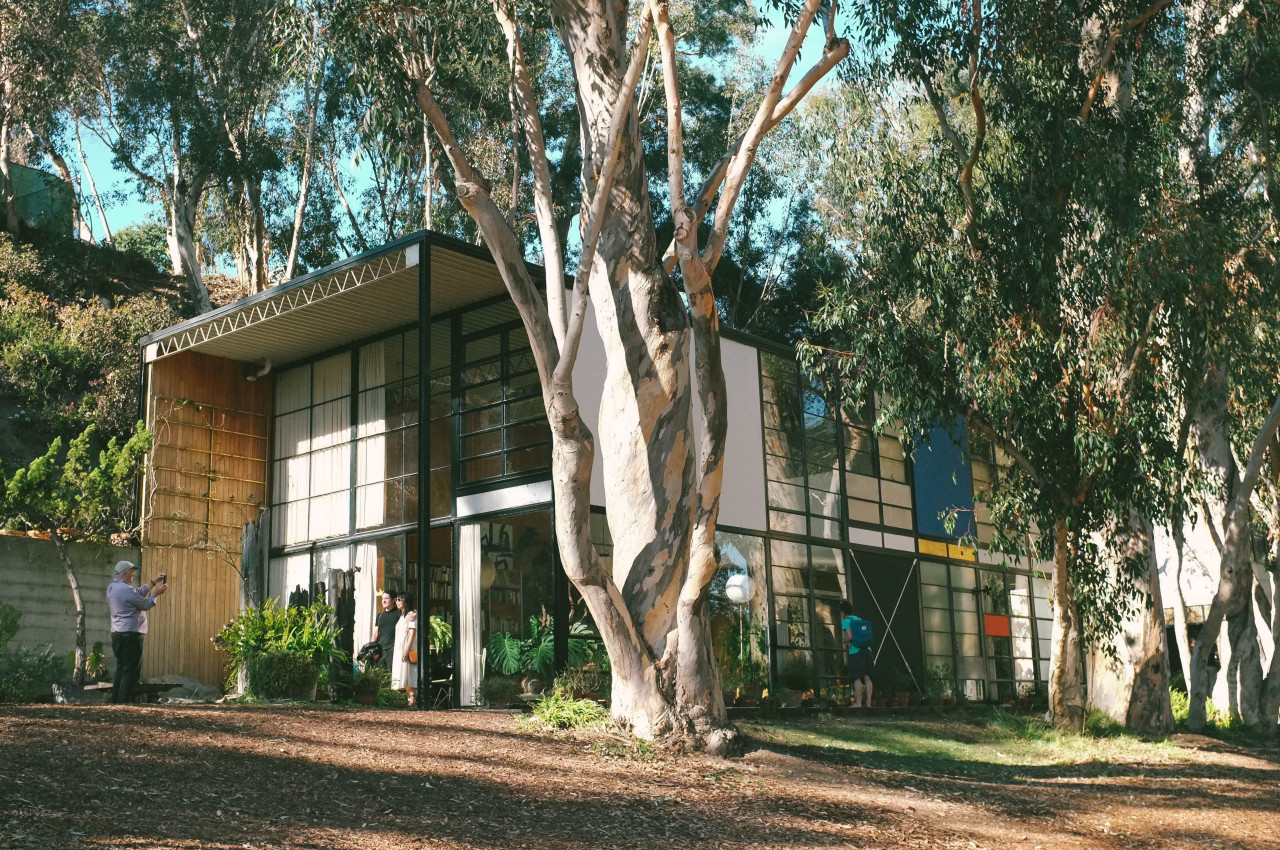
In December, I finally visited Case Study #8, the couple's home and studio — the base of their operations until they died. Walking along the grounds and looking at the desks where they worked, I was struck by how long I've turned to the Eames for inspiration. I've been designing — from my childhood bedroom to college projects to professionally — for fifteen years. My career goals have changed, inspirations have come and gone, the type of work I do and the type of work I want to do has evolved. Designers who influenced me in my early career no longer fit the kind of work I'm interested in and I look back on much of my old work with a mix of embarrassment and confusion.
The Eames, however, have been the one consistent. Regardless of where I am in my career, regardless of my own aspirations as a designer or creative person, Charles and Ray Eames serve as a model. When I was interested in architecture and interior design, I looked to their furniture and architecture work. When I was interested in illustration, towards the end of my undergraduate education, I looked to Ray's textile designs. As my interest in writing and theory grew, I read the couple's writings and read over their lectures. When I made my first video essay and started thinking about film, their own film output once again became the touchstone for my work. The themes they turned to again and again — media, storytelling, honesty, what design could be — mirror the themes that run through my own work.
In an interview in an interview on NBC's Home show, Charles said the believe everything they do falls under the category of 'architecture', whether its a building or a chair or a dress. They couple, in so many ways, is the epitome of the polymathic designer — building a practice that spans disciplines and included research, writing, building, and teaching. They worked across scales, from home goods to massive exhibitions, within corporations like IBM and independently on their own projects. For Charles and Ray, theory and practice were on in the same; they saw no difference between thinking and making. Everything a response to what came before it.
The Eames chair that sits in the corner of my living room serves as reminder to how they worked — a career built upon ideas and aesthetics, of working in public and a continual restlessness to figure out the next thing. But it's also a talisman of sorts, an object that connects the threads of my own life, the piece that bridges the gap between a childhood bedroom and future ambitions. "We work because it's a chain reaction," Charles said, "every subject leads to the next." ✖